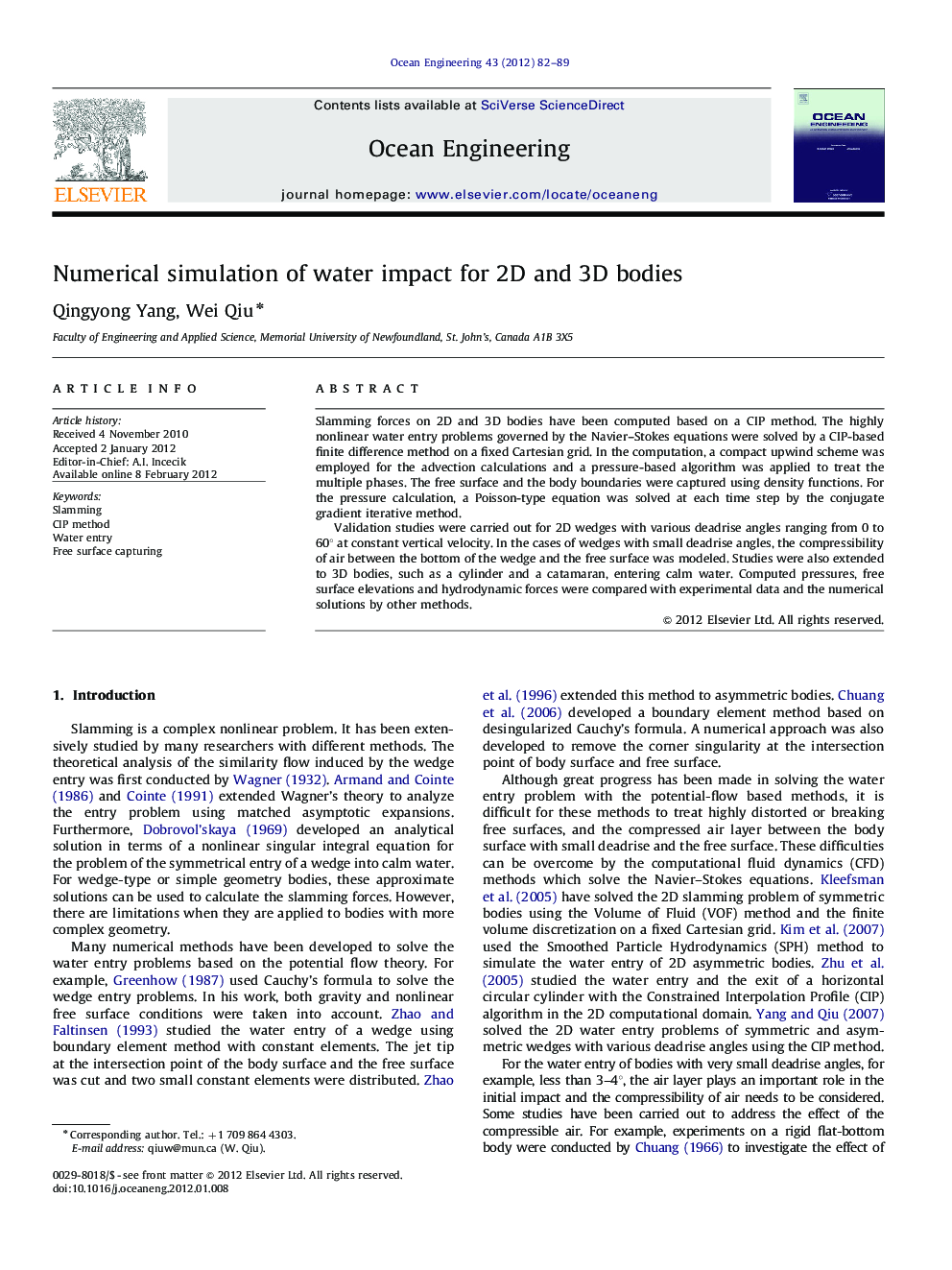| Article ID | Journal | Published Year | Pages | File Type |
|---|---|---|---|---|
| 1726325 | Ocean Engineering | 2012 | 8 Pages |
Slamming forces on 2D and 3D bodies have been computed based on a CIP method. The highly nonlinear water entry problems governed by the Navier–Stokes equations were solved by a CIP-based finite difference method on a fixed Cartesian grid. In the computation, a compact upwind scheme was employed for the advection calculations and a pressure-based algorithm was applied to treat the multiple phases. The free surface and the body boundaries were captured using density functions. For the pressure calculation, a Poisson-type equation was solved at each time step by the conjugate gradient iterative method.Validation studies were carried out for 2D wedges with various deadrise angles ranging from 0 to 60° at constant vertical velocity. In the cases of wedges with small deadrise angles, the compressibility of air between the bottom of the wedge and the free surface was modeled. Studies were also extended to 3D bodies, such as a cylinder and a catamaran, entering calm water. Computed pressures, free surface elevations and hydrodynamic forces were compared with experimental data and the numerical solutions by other methods.
